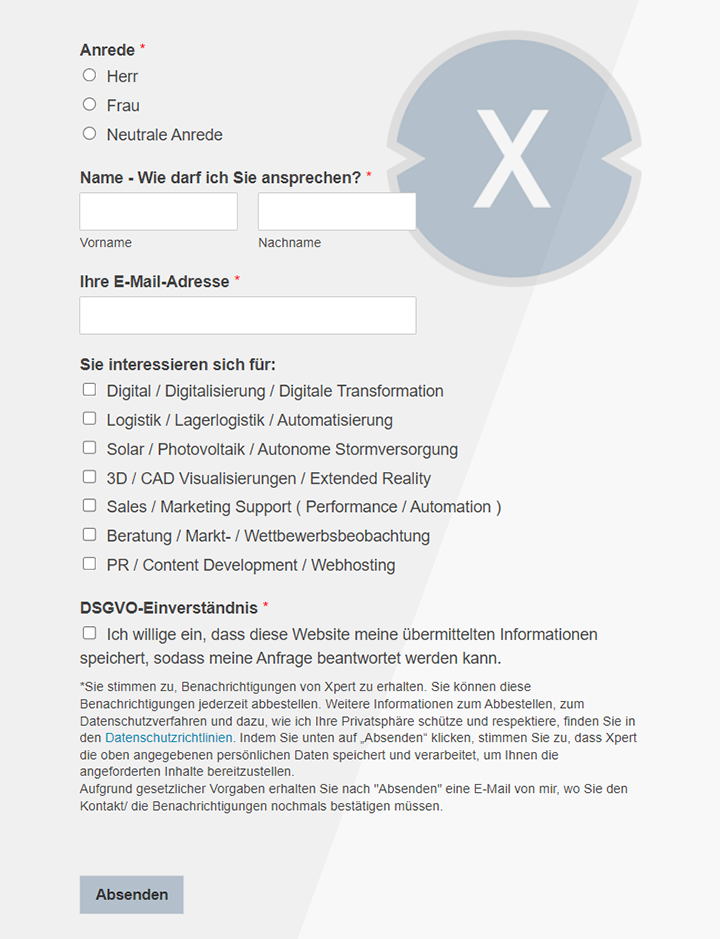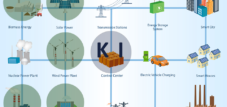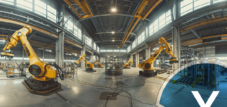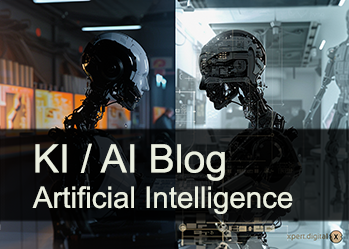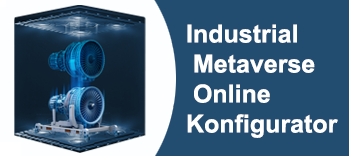Where are we really in the area of robotics and automation? The headlines are full of breakthroughs
Xpert pre-release
Language selection 📢
Published on: July 17, 2025 / update from: July 17, 2025 - Author: Konrad Wolfenstein

Where are we really in the area of robotics and automation? The headlines are full of breakthroughs - picture: xpert.digital
Comprehensive analysis of current developments in robotics
Automation decodes: Future technologies between hope and challenge
As someone who carefully pursues the technological currents of our time, a central question always arises: Where are we really in the field of robotics and automation? The headlines are full of breakthroughs, investments and also concerns. In order to draw a clear picture here, it is necessary to systematically look at the individual pieces of the puzzle and to recognize the patterns behind them.
1. My first fundamental question is: What are the economic drive springs that drive the current wave of robotics innovation? Is it just about technological progress, or do we see a fundamental shift on the capital side?
The answer to this is complex, but at its core it can be attributed to a powerful symbiosis of capital flow and strategic market consolidation. Technological progress, especially in the area of artificial intelligence, is undoubtedly the ignition spark, but the fire is kept and enlarged through massive investments and targeted acquisitions.
When I speak of consolidation, what exactly do I mean by that and what examples underpin this thesis?
Consolidation is a clear sign of the maturity of a market. It means that large, established companies begin to buy smaller, innovative start-ups to secure their technology, talent and market shares. You don't just buy a product, but a future perspective. A prime example that perfectly illustrates the dynamics is the recently announced takeover of Monogram Technologies by the medical technology giant room.
Why is this deal so important? Room biomet is an established player in the area of orthopedic surgery. Monogram, on the other hand, is an agile company that specializes in autonomous surgical robotics. Their technology promises to not only assist operations, but to sometimes perform autonomously, which increases precision and potentially improves the results for the patients. Instead of putting years and huge amounts into your own development of a comparable technology and taking the risk of failure, Zimmer Biomet purchases the innovation directly. This shows two things: First, autonomous robotics in surgery is no longer a science fiction, but a strategic asset that established corporations are willing to pay high sums. Second, it signals other start-ups in the sector that their developments have a clear “exit channel”, which in turn promotes the willingness to invest in the early phase. The market does not adjust itself, it is structured by structuring the big ones the most promising pioneers.
This leads me to the next question: If established companies buy, who finances the next generation of innovators? Does the money only flow to already known areas?
Here we observe a remarkable diversification. The investments are not only high, they are also wide and come from a wide variety of sources. The traditional picture in which only risk capitalists (VCS) invest in tech startups has long been outdated.
First, considerable sums flow in sectors that were previously considered more automation lacquer. Building is an excellent example. Start-ups such as ROBOTICS that develop robots to automate marine floors for construction projects such as offshore wind farms attract considerable investments. Why? Because the construction industry is under enormous productivity pressure and automation is a huge lever. Any process that can be automated - from measurement to welding to heavy machines - promises massive efficiency gains.
Second, we see high investments in highly specialized niches and tactical robotics. A company like Xtend that develops systems that enable soldiers to intuitively control drones and robots in complex urban environments, receives financing because modern conflicts unmistakably show the need for such technologies. It is about taking people out of the direct danger zone and at the same time increasing operational performance.
Third, and this may be the most interesting, the investors diversify themselves. We don't just see VCS. Established industrial companies such as Johnson Electric, a global manufacturer of engines and movement systems, found joint ventures in the field of humanoid robotics. This is not a pure financial investment, but a strategic step to participate in the next major paradigm shift in the automation and to bring your own core competencies into a new generation of product. Unternehmen companies also invest in a targeted manner. If the fashion giant Inditex (Zara parent company) invests in robotics startups, then not because they want to build robots, but because they have to optimize their own logistics and supply chain to the utmost. The investment here is a means for the purpose of your own transformation.
After all, we must not forget state and quasi-state actors. Metas donation to promote MINT initiatives (mathematics, computer science, science and technology), which also includes robotics, is not a direct investment in a company, but an investment in the future “human capital” that will carry this sector. It is recognition that the strength of a robotics ecosystem depends on the availability of qualified specialists.
In summary, it can be said that the economic foundation of robotics is wider and more stable than ever. It is supported by a mixture of strategic acquisitions by market leaders, targeted venture capital investments in new fields of application and strategic investments of industry -internal groups, supplemented by the promotion of the training bases.
2. If the capital is the fuel, what is the engine then? My next examination is aimed at technology itself. What makes today's robots so much more powerful than their predecessors? The answer seems to be inevitable to artificial intelligence (AI) and autonomy. But what does that mean in detail?
Exactly. The qualitative jump we experience is inseparable from the progress in the AI. The mechanics, moving poor or wheels, has been solved for decades. The true revolution takes place in the “decision -making” of the machine. This leads us to the core of change: the pursuit of autonomy.
What is the difference between an automated and an autonomous system, and why is this trend so decisive?
An automated system carries out a predefined, repetitive task. A classic industrial robot on the assembly line is automated. He always welds in the same place without "understanding" the environment. If the component is not exactly positioned, it fails.
An autonomous system, on the other hand, can perceive its surroundings, interpret the situation and adapt its actions to unforeseen changes in order to achieve a goal. It requires significantly less or no direct human intervention. This trend is crucial because it exponentially expanded the area of application of robots - away from the strictly controlled environments of the factory halls into the chaotic, unstructured real world.
The examples that we have already seen in the context of the investments impressively demonstrate this:
Surgery (room/monogram): An autonomous surgery robot not only assists, it runs certain steps of the operation - such as the precise milling of a bone for an implant - independently and with superhuman accuracy after the surgeon has released the plan. It adapts to minimal movements of the patient in real time.
Building (threat): An autonomous underwater robot does not map the sea floor by stubborning a route that a person specifies, but by navigating it independently, switching obstacles and optimally aligning its sensors to the circumstances.
Underwater maintenance (Remora Robotics): Robots that clean the ship flours of vegetation do this autonomously. They adhere to the fuselage, recognize which areas need to be cleaned, and work them systematically without a diver or pilot having to control them permanently.
Tactical robotics (Xtend): This is about “supervised autonomy”. Man specifies the goal (e.g. exploring this building), but the robot navigates independently through doors, around corners and stairs - tasks that would make manual remote control extremely difficult and slow.
The common denominator is the reduction of cognitive load for humans. Man becomes a “manager” or “commander” of the robot systems from the “pilot”.
How exactly does AI enable this autonomy? What specific AI technologies are the decisive pioneers here?
AI is not a monolithic block here, but a toolbox of different technologies. The most important are computers vision, sensor debt, machine learning and planning algorithms. However, the true breakthrough of the past few years is in two areas: the performance of AI models and the availability of training data.
A key term here are basic models (Foundation Models) for the robotics, such as those developed by Google Deepmind. The idea is to train a huge AI model with a huge amount of data about physical interactions-videos of robots that grab objects, people who do tasks, simulations etc. The result is a model that develops a fundamental “understanding” for physics, causality and action. This general model can then be “fine -adjusted” on specific tasks with relatively little effort. So instead of programming a robot from scratch for each new task, you can fall back on this previous knowledge. This accelerates the development dramatically.
At the same time, the simulation -based data generation revolutionizes training. Researchers on and elsewhere create highly realistic virtual environments. In these simulations, a robot can carry out millions of experiments in a very short time to learn a ability - for example, grasping differently shaped objects. He can “fail” without damaging expensive hardware. The “Policy” (action strategy) learned in the simulation is then transferred to the real robot. This solves one of the largest conifers of the robot AI: the lack of real training data.
Another piece of the puzzle is the Edge-KI. What does that mean? Traditionally, complex AI models require huge data centers in the cloud. A robot would have to always send sensor data to the cloud, have it processed there and recover the commands. The delay (latency) makes this impractical for many real -time applications. EDGE-KI processors are highly specialized, energy-efficient chips that make it possible to carry out demanding AI calculations directly on the robot (at the edge "). This is essential for autonomous vehicles, drones and every mobile robot that has to make quick, reliable decisions without constant internet connection. It increases autonomy, data security (since sensitive data does not have to leave the device) and the robustness of the system.
With all this increasing intelligence and autonomy, ethical questions inevitably have to come to the fore, right?
Absolutely. This is perhaps the largest and most difficult challenge. The more autonomous a system becomes, the more responsibility is shifted from the human operator to the developer, the manufacturer and the system itself. The questions are fundamental:
Responsibility: Who is liable if an autonomous surgery robot makes a mistake? The surgeon that monitored the intervention? The hospital? The software manufacturer?
Decision making in Dilemmata: How should an autonomous vehicle decide if an accident is inevitable? How should an autonomous weapon system differentiate between combatants and civilians if the information situation is unclear?
Bias: AI models learn from data. If this data contains historical prejudices, the robot will reproduce or even reinforce these prejudices. How do we ensure fairness?
Transparency: Can we even understand the decisions of a complex AI? When a robot does an unexpected action, we need the ability to “explain Ai” (Xai) to understand why he did it.
The development of AI robots is therefore not only a technical, but also a deeply ethical and social task. It is about establishing guidelines and standards that ensure that these powerful tools are developed and used in harmony with our human values. Compliance with ethical guidelines must become an integral part of the design process - “ethics by design”.
🎯🎯🎯 Benefit from Xpert.Digital's extensive, fivefold expertise in a comprehensive service package | R&D, XR, PR & SEM

AI & XR 3D Rendering Machine: Fivefold expertise from Xpert.Digital in a comprehensive service package, R&D XR, PR & SEM - Image: Xpert.Digital
Xpert.Digital has in-depth knowledge of various industries. This allows us to develop tailor-made strategies that are tailored precisely to the requirements and challenges of your specific market segment. By continually analyzing market trends and following industry developments, we can act with foresight and offer innovative solutions. Through the combination of experience and knowledge, we generate added value and give our customers a decisive competitive advantage.
More about it here:
Change industry: robotic innovations change everything
3. After we have illuminated the economic and technological basics, the logical next question arises: Where exactly are these waves of change open? How does the robotics specifically transform work in the various industries?
The effects are across sectors, but the type and depth of the transformation varies greatly. I would like to pick out some of the most important sectors here and analyze the specific changes.
Let's start with one of the most traditional industries: construction. How can robotics gain a foothold here?
The construction is ripe for disruption. It suffers from a low increase in productivity, a shortage of skilled workers and high accident rates. Robotics starts here. We see automation of entire process chains. Self-driving construction machines-excavators, planner caterpillars, rollers-who perform highly precise earthworks via GPS and lidar sensors, are no longer a future music. They increase efficiency and security because fewer people have to work in dangerous areas. Specialized robots take on tasks such as walls, the welding of steel carriers or attaching facade elements. The already mentioned use of robots for inspection (as with Robotics) also reduces the time and cost of preliminary examinations and maintenance. The robotics promise to make the construction process more predictable, faster and safer.
And in medicine, a high technology sector par excellence? What happens beyond the already established systems such as the DA Vinci robot?
In medicine, the trend is clear towards higher precision, stronger personalization and more minimally invasive interventions. Robot -based spine surgery is an excellent example. Here the robot enables the surgeon, screws and implants to place with an accuracy in the submillimeter range, which significantly lowers the risk of nerve damage. The real next wave comes from new approaches. Endoquest Robotics, for example, develops a platform for endoluminal surgery. This means that operations in the abdomen can be carried out by natural body openings (such as the mouth) instead of demanding large cuts. The flexible robot navigates through the gastrointestinal tract and can operate from there. This is the epitome of minimally invasive surgery and promises a drastically faster recovery for the patients. So here we see a development towards completely new surgical methods that would be simply unthinkable without robotics.
Another sector of strategic importance is defense. What role does robotics play here?
In the defense area, robotics have become a central element of modernization strategies worldwide. It is no longer just about educational drones. Tactical robot systems on the ground (Unmanned Ground Vehicles, UGVS) are used for logistics, education and even the direct support of infantry units. A company like Kraken Robotics develops autonomous underwater vehicles (AUVs) that can search and identify mines independently - a dangerous and time -consuming task that has so far been done by minet divers or remote -controlled systems. Autonomy significantly increases the speed and safety of the mine defense. The participation of quantum system companies in a Ukrainian defense robot company is particularly revealing. This indicates that the next generation of military robotics could not only rely on AI, but also on quantum sensors for superior navigation and target detection or on quantum communication for mosquito -safe control. The robotic changes the battlefield fundamentally.
What about the areas that are already considered highly automated, such as logistics and retail?
Even here there are still enormous jumps in innovation. The warehouse automation by companies such as Amazon is known. The robots bring the shelves to the employee. The next stage is the complete automation of the “Pick and Pack” process. Amazon develops robots that can reach and pack individual, different articles from a container - a task that has so far been extremely difficult to automate due to the variability of the objects. Another area is the “last mile”. Lief robots of companies such as Pudu Robotics, which are tested in partnerships with chains such as 7-elves, aim to automate the delivery in urban rooms. Robots for inventory or mobile information points appear in retail itself. The robotics penetrate from the large, invisible logistics centers to the area visible to the customer.
Is there also progress in production and agriculture?
Yes, absolutely. In production, we see an ever closer interlinking of robotics and add-on production (3D printing). Robot arms are used as mobile 3D printers to manufacture large components, or they take over the post-processing and assembly of printed parts. This enables a highly flexible and decentralized production of complex components.
In agriculture, often referred to as “Precision Agriculture”, the effect is also enormous. AI-controlled drones and robots analyze the condition of each individual plant in one field. You can only specifically spend fertilizers, water or pesticides where it is necessary. This saves resources, protects the environment and increases the yield. Autonomous tractors and harvesting machines are also on the rise. Initiatives such as the “Moldova Digital Agriculture Incubator” show that this is not a pure phenomenon of industrialized nations, but is seen as a key technology to secure global food supply.
4. So far I have spoke above all about the “inner values” - the software and the areas of application. But does the exterior, the physical form of the robot also change? Are we moving to a world that science fiction has drawn for decades?
This question is absolutely justified. And the answer is a clear yes. We experience a fascinating diversification of the robot forms that go far beyond the classic robotic arm or the mobile chassis.
The most iconic form is the humanoid robot. Is that just a gimmick or is there serious progress and real benefits here?
The idea of the humanoid robot is experiencing a renaissance, and this time it is carried by pragmatism. The decisive advantage of a humanoid robot is that it is designed for a world created by humans. He can climb stairs, open doors, use tools that are made for human hands. Instead of adapting the entire environment to the robot (as in a factory), the robot adapts to the surroundings. This opens up huge fields of application in logistics, maintenance, care and even in industry.
Johnson Electric's investment and the cooperations of Chinese companies show that a strategic race has started here. A concrete, impressive example is the use of humanoid welding robots at HD Shipbuilding (formerly Hyundai Heavy Industries). These robots can work in narrow, difficult -to -access areas of ships where the use of conventional, bulky welding robots would be impossible. They use their human -like mobility to carry out complex weld seams on curved surfaces. This is the transition from the research laboratory demonstration to real, value-adding application.
So the trend is only towards human -like robots?
Quite the opposite. Parallel to the development of generalists such as the humanoids, we see an explosion of specialization. Nature has produced its own solution for every ecological niche, and the robotics follow a similar principle.
Inspection in cramped rooms: Cleo Robotics develops a drone that looks like a recessed propeller. It is extremely compact and collision -resistant, which enables it to fly safely in tanks, pipes or ventilation shafts - places that are dangerous or unreachable for conventional drones or humans.
Underwater maintenance: Sea Teknik Robotics does not develop all-purpose diving robots, but highly specialized systems that, for example, do only one task: cleaning networks in fish farms. They are perfectly adapted to this one task and the surrounding area and unbeatably efficient in it.
Swarm robotics: Researchers at Harvard University work on swarms of small, simple robots. Each single robot is not particularly intelligent, but in combination you can solve complex tasks, similar to an ant state. They could be used to explore large areas, agriculture or for construction tasks. The principle is robustness through redundancy and the solution to big problems through many small players.
Which really futuristic skills are visible on the horizon? What about concepts like self -repair?
Here we enter the realm of basic research, but the results of which could shape robotics in ten or twenty years. Research on robots that can repair themselves is such a area. A particularly fascinating approach is “robotic cannibalism”. The idea is that a robot in a swarm that has a irreparable damage is used by the other robots as a “spare parts warehouse”. Functioning robots could therefore remove defective parts of a “dead” colleague and install them with themselves. This has immense implications for long -term missions without human maintenance, for example on Mars, in the deep sea or in disaster areas. It is a paradigm shift from disposable electronics towards sustainable, resilient systems.
One last question about the skills: we talked about intelligence, but what about emotions? Why should a robot be able to express emotions?
This is an excellent point that is often misunderstood. Disney Imagineering's work in this area does not aim to give robots real feelings. It is about improving human-robot interaction. Emotions are a central means of communication for humans. A smile, a frown, a surprised look - all of this transports an abundance of information about the condition and intentions of a person in a fractions of a second. If a robot is able to express its state (e.g. "I have recognized the object", "I am unsure", "I need help") by a human -readable facial expressions or body language, the cooperation becomes more intuitive, more smooth and safer. It builds up and reduces the inhibition threshold in dealing with the technology. So it's about a more effective interface, not about artificial awareness.
Our recommendation: 🌍 Limitless reach 🔗 Networked 🌐 Multilingual 💪 Strong sales: 💡 Authentic with strategy 🚀 Innovation meets 🧠 Intuition
At a time when a company's digital presence determines its success, the challenge is how to make this presence authentic, individual and far-reaching. Xpert.Digital offers an innovative solution that positions itself as an intersection between an industry hub, a blog and a brand ambassador. It combines the advantages of communication and sales channels in a single platform and enables publication in 18 different languages. The cooperation with partner portals and the possibility of publishing articles on Google News and a press distribution list with around 8,000 journalists and readers maximize the reach and visibility of the content. This represents an essential factor in external sales & marketing (SMarketing).
More about it here:
Change industry: robotic innovations change everything
5. We now have a detailed picture of the technology and its applications. But every profound technological change also has far -reaching social consequences. What economic and social effects are emerging by the advance of the robotics?
This question is of central importance, because technology does not exist in the air empty. It shapes our society, our work and our coexistence.
The most frequently asked and feared question is: do the robots take away the jobs?
The answer is not as easy as a yes or no. There is a profound change in the world of work, no simple elimination of jobs. Gartner's forecast that a significant proportion of supply chain managers will be managed by 2030 and no longer manage people and no longer people is very revealing here. It does not mean that the supply chain manager becomes unemployed. Rather, his job description changes radically. His task will be to monitor a fleet of autonomous robots, analyze their performance, make strategic decisions and manage exceptions or disorders. The repetitive, manual and data processing activities are automated, while human work is shifted to strategic, creative and problem -solving tasks.
But this also means that qualification requirements are massively shifted. New professions will arise (e.g. robot fleet managers, AI ethics, robotics maintenance specialist), while others lose importance. The challenge for society is to design this transition through education, retraining and lifelong learning in order to avoid a “lost generation” of employees. It is a transformation, not apocalypse.
In addition to the world of work, there is also potential to tackle major social challenges with robotics, for example demographic change?
Yes, and this is an enormously important field of application. Many industrialized nations face the problem of an aging population with simultaneous lack of nurses. Here the robotics can play a supportive role, not as a replacement for human care, but as a supplement. Robots can help with physically exhausting tasks, for example with lifting people. As an intelligent assistant, you can remind you of medication, monitor vital data and automatically call help in an emergency. Social robots can counteract talks, games or the connection to members of the loneliness. Research intensively examines how such systems can improve the quality of life of older people and enable them to live independently in their familiar surroundings longer.
What about acceptance among the population? Do people trust these new machines?
Trust is the key to the successful integration of robotics into society. This trust must be actively built up. Interesting research results show that subtle design decisions play a major role here. A study showed, for example, that robots that create a suitable eye contact - i.e. look at people before speaking or initiate an action - are perceived as more trustworthy and intelligent. It is about making the behavior of the robots predictable, safe and intuitive for humans. Transparency about the skills and limits of a system is also crucial. Any trust (be right) can be just as dangerous as a fundamental distrust.
With all the networking and data collection, there must also be considerable concerns about security, right?
Absolutely. The security concerns are diverse and go beyond pure cyber security (protection against hacking). A central topic is data security and national security. Checking drones from the manufacturers DJI and Autel by the US authorities is a clear indication of this. The question here is not only whether the drone can be hacked, but also: What data does it collect? Where are this data saved? Who has access to it? When drones inspect critical infrastructures such as power plants, bridges or ports, the data collected becomes a strategic asset. The dependence on robotics technology from potentially rival states is increasingly regarded as a national security risk. This leads to efforts to build their own, national or allied technology ecosystems.
6. My last big question aims at the basis of all of this: people. In order to develop, build, wait and manage all of these complex systems, an enormous number of qualified specialists are needed. How is it ensured that we have the offspring to design this revolution?
This question is crucial, because without the right heads even the best technology remains only a prototype. The promotion of talents has therefore become a strategic priority for companies and states.
What role do extracurricular activities such as robotics competitions play here?
They play an immense role that can hardly be overestimated. Competitions such as the First Robotics Competition or Robocup are much more than just one game. They are incubators for the next generation of engineers and scientists. Students and students not only learn to program or build here. In a highly motivating environment, you acquire practical skills in project management, teamwork, problem solving under time pressure and strategic thinking. You will experience the entire cycle from the idea to design and construction to testing and improving. Above all, however, these competitions spark a passion for technology and show that MINT subjects lead to tangible, exciting results. Based on this experience, many participants opt for a corresponding course and a career in this field.
And how does the formal education system react to this need?
The education system begins to adapt, often in close cooperation with industry. We see the emergence of new courses that explicitly combine robotics, AI and mechatronics. Universities and universities of applied sciences enter into partnerships with companies to offer practical projects, internships and dual courses. This ensures that the training does not pass the real needs of the market. There are also increasing programs that already integrate robotics and already integrate into school lessons in order to create basics at an early stage and to reduce fear of contact. The challenge is to quickly adapt the curricula to the rapid technological developments and to train enough qualified teachers.
Final synthesis: Which overall picture results from all these observations?
When I put together all of these facets - the capital, the AI, the industry -specific applications, the new forms and the social effects - the image of a sector results in a phase of exponential growth and profound transformation. The robotics have finally broken out of its niche in the factory halls and becomes a universal key technology that affects every aspect of our life and our economy.
The growth is driven by a self -reinforcing spiral: technological breakthroughs, especially in the AI, enable new applications. These new applications attract massive, diversified investments. These investments in turn finance the next wave of technological development and the strategic consolidation of the market.
We see a clear movement towards autonomous, intelligent systems that can act in the unstructured real world. At the same time, the physical forms of robot, from highly specialized tools to universally usable humanoids, diversify.
However, this development is not a purely technological process. It raises fundamental ethical questions, transforms the labor market, creates new geopolitical dependencies and requires a fundamental adaptation of our education system. The successful design of this future not only depends on our ability to build intelligent machines, but also on our wisdom to integrate it responsibly into our society. The robotics revolution is in full swing, and we are only at the beginning of its true potential and its challenges.
We are there for you - advice - planning - implementation - project management
☑️ SME support in strategy, consulting, planning and implementation
☑️ Creation or realignment of the digital strategy and digitalization
☑️ Expansion and optimization of international sales processes
☑️ Global & Digital B2B trading platforms
☑️ Pioneer Business Development
I would be happy to serve as your personal advisor.
You can contact me by filling out the contact form below or simply call me on +49 89 89 674 804 (Munich) .
I'm looking forward to our joint project.
Xpert.Digital - Konrad Wolfenstein
Xpert.Digital is a hub for industry with a focus on digitalization, mechanical engineering, logistics/intralogistics and photovoltaics.
With our 360° business development solution, we support well-known companies from new business to after sales.
Market intelligence, smarketing, marketing automation, content development, PR, mail campaigns, personalized social media and lead nurturing are part of our digital tools.
You can find out more at: www.xpert.digital - www.xpert.solar - www.xpert.plus






